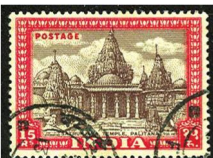In the foreword to the book “Story of the Indian Post Office” by Mulk Raj Anand (1954) that came out on the occasion of hundred years of the Post Office in India, Jawaharlal Nehru wrote, “Among the many things, good and bad, that the modern world has produced, surely the postal system, which covers the world, is one its most beneficent activities.
There is nothing bad about it and it is all good, and it affects every individual, wherever he may be in this wide world, connecting him with millions of others.” No wonder such an institution will attract the attention of many scholars and evolution of the organisation in different phases will be well documented. The book “India Post @ 75” by Dr. Charles Lobo (Stamp Studio, Bangalore, 2022) is the latest addition to that process. The Post Office was perhaps the first institution of British India that acquired an Indian character.
Advertisement
This happened because the employees were mostly recruited locally and European bosses at the top were too remote to the general staff working in far-flung areas. “The Post Offices of India” by Ananda Gopal Sen (1875) is perhaps the first attempt to document the history of post offices in India.
“Postal History and Practice” by I.G.J. Hamilton (1910) and “Post Office of India and Its Story” by Geoffrey Clarke (1921) were two other important attempts to describe the evolution of post offices in India in pre-independence days.
Since the 1970s, Indian Philatelists, their Societies and philately enthusiasts came out in a big way for documentation of the history of postage stamps, postmarks, philatelic covers, postal stationery, and various other related matters. “Cochin Postmarks and Cancellation by G.B. Pai (1974), “Post Card Catalogues of India and Indian States: 1879-1979 by Madhukar Jhingan (1979), “From the Diary of Stephen Smith” by D.N. Jatia (1980), “Hyderabad Philatelic History” by M.A. Nayeem (1980), “A Handbook on Gwalior Postal History and Stamps” by Prof. V.K. Gupta (1980), “Slogans and Special Postmarks of India: 1875-1947” by Ashok Kumar Byanwala (1982), “Local Postal Service of Thikana Khetri (Jaipur State) and Its Fiscals” by O.P. Bhatnagar (1988) , “Ajmer Postal History” by J.M. Dhor and T.C. Ranjan (1989), “Stamps of Indian Native States“ by P.M. Medhora (1997), “The Scinde Dawks and Lithographs of India” by D.E. Wadia (1997) , “Stamps of Indian Native States” by P.M. Medhora (1997), “Brahmini Dawk: history of Postal Communication in Mewar” by R. K. Sarawagi and M. Deogawanka (1999) are to name a few.
Most of these books documented well the history of post offices in the princely states of the subcontinent before their merger. A new trend was observed in the 1980s to document the history of the GPOs of Calcutta, Bombay and Madras. These three General Post Offices, in the early years of British rule were the cornerstones of the postal system of the subcontinent in the three presidencies.
Many books came out, mostly in the next two decades to show how the postal administration was run in three Presidencies from these three GPOs towards the beginning of British rule in India. The work of Mohini Lal Majumdar, a retired officer of the postal department, was an important milestone in documentation of the postal history in India. His books “Postal History by Zemindari Dawk” (1984), “Imperial Post Offices of British India” (in two volumes, 1990), “Early History and Growth of the Postal System in India” (1995) are notable academic contributions in the field.
History of the Army Postal Service (APS) Corps was well taken care of in the books “Army Post Office and Philately” by Brig. D.S. Virk (1980), “Indian Army Post Offices in Second World War” by the same author (1982) and in “A Brief History of Army Postal Service Corps” by Brig. S.K. Sen (2002). “Postal Censorship in India (1939-45)” by Brig. Virk (1983) is an interesting account of how mails were used in the past for espionage during the wars.
When the Post Office in India was observing its 150 years, Chief PMG, West Bengal Postal Circle, brought out the book “Milepost: On a Long Journey” (2005). In the perspective of the evolution of the postal system in the world, ‘Milepost’ gave a wonderful account of all the landmarks of 150 years of post offices in India.
The book, “instead of attempting a descriptive history of the post office, made it anecdotal, recounting for the reader the passage of the letter and reliving the romance surrounding the journey”. “An approach to History of Post Office in India and other essays” by Shivnath (2002), “Postal History of Portuguese India” by Umesh Kakkeri (2003), “Sikh Heritage to Stamps” by Ranjit Singh (2012), “From Mail to Email: The Story of Indian Post Office” by Dr. Vijaykumar K.C. Nair (2018) are some other notable publications on postal history of India in recent decades.
“India’s Freedom Struggle Through India Postage Stamp” by Vishnu S Saxena (2002) and “Gandhi Handbook” by Manik Jain and Mrinal Kanti Ray (2006) are two interesting books that respectively depicted the saga of India’s freedom struggle and the life and works of Mahatma Gandhi through postage stamps.
On two accounts, the latest book of Dr. Lobo (“India Post @ 75”) is an important contribution to any reader interested in the post office. First, the book tries to assess how the Partition of India affected the Postal communication system in the concerned states immediately after 15 August 1947. The airmail transmission in India suffered badly as Karachi, the only foreign airmail terminal for the entire subcontinent, was included in Pakistan.
There was no office in India where Customs examination of dutiable parcels received by Airmail from abroad could be done. The crisis continued till a new terminal was developed by November 1947. Railway-cum-road route between Assam and the rest of India was cut off when East Pakistan territory intervened between the two. Till the time an alternative route was developed from Calcutta through Siliguri and Cooch-Behar, all mail was sent to Guwahati by air without any surcharge.
New generation readers will find it quite interesting to learn how an unprepared nation faced the catastrophe of partition. The second interesting aspect of the book is the new perspective in the field when the author discusses how women are integrated with various schemes of post offices in India and how children are focused on in the institution.
The author ends with an indicated roadmap of India Post for next 25 years in the fast-changing scenario. Any student of postal history in India will find the book a useful ready reckoner.











